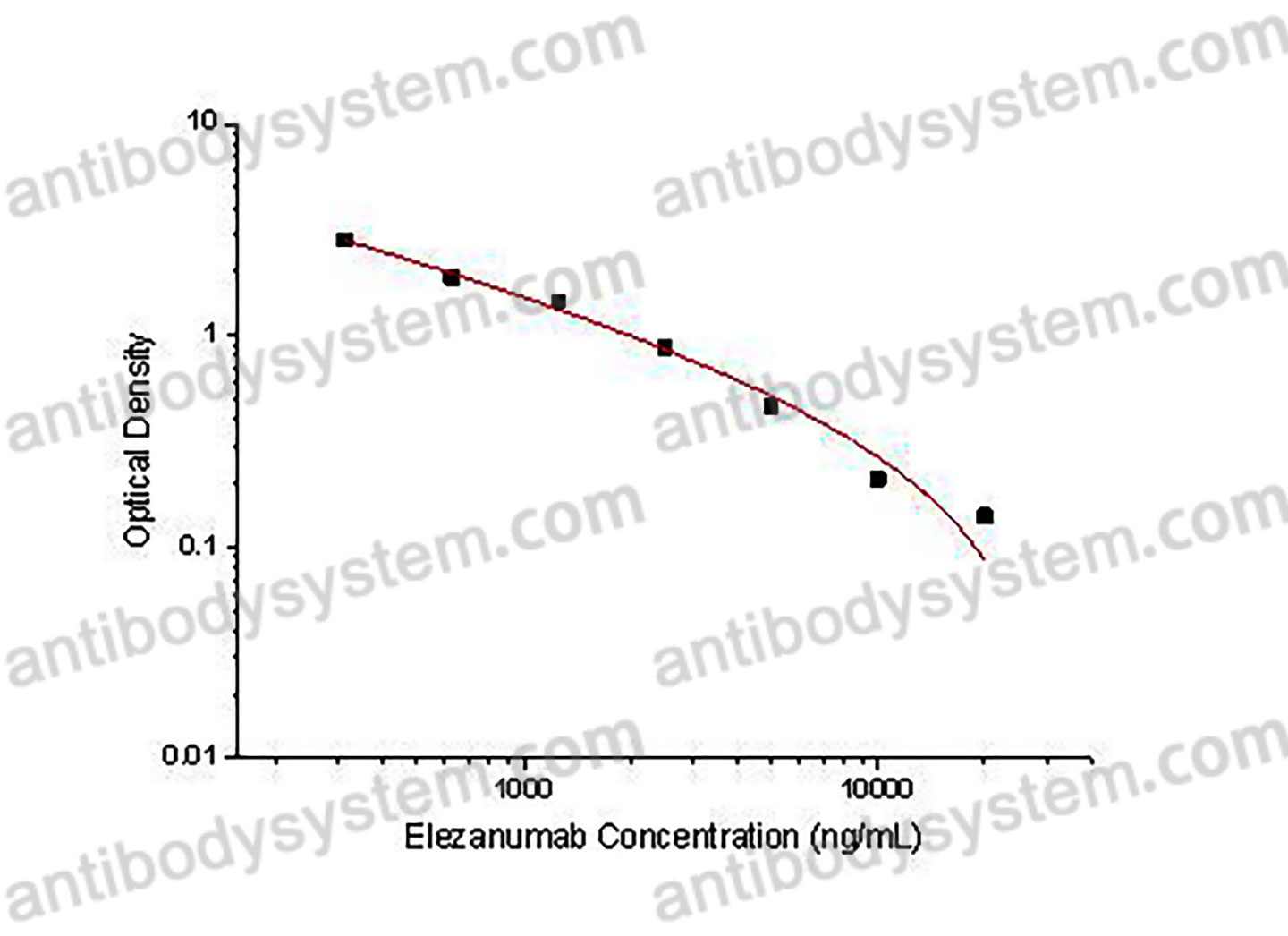Catalog No.
KDJ37701
Description
PRINCIPLE OF THE ASSAY This assay employs the quantitative competitive enzyme immunoassay technique. Recombinant Human RGMA has been pre-coated onto a microplate. Standards or samples are premixed with biotin-labeled antibody and then pipetted into the wells. Elezanumab in the sample competitively binds to the pre-coated protein with biotin-labeled Elezanumab. After washing away any unbound substances, Streptavidin-HRP is added to the wells. Following a wash to remove any unbound enzyme reagent, a substrate solution is added to the wells and color develops in inversely proportion to the amount of Elezanumab bound in the initial step. The color development is stopped and the intensity of the color is measured.
Applications
Used for the quantitative determination of Elezanumab concentration in serum and plasma.
Detection method
Colorimetric
Sample type
Plasma, Serum
Assay type
Quantitative
Range
312.5 - 20,000 ng/mL
Sensitivity
223.20 ng/mL
Precision
Intra-Assay Precision (Precision within an assay): <20%
Three samples of known concentration were tested sixteen times on one plate to assess intra-assay precision.
Inter-Assay Precision (Precision between assays): <20%
Three samples of known concentration were tested in twenty four separate assays to assess inter-assay precision.
|
|
Intra-Assay Precision |
Inter-Assay Precision |
||||
|
Sample |
1 |
2 |
3 |
1 |
2 |
3 |
|
n |
16 |
16 |
16 |
24 |
24 |
24 |
|
Mean (ng/mL) |
12368.0 |
2752.1 |
676.1 |
13043.7 |
3254.5 |
687.4 |
|
Standard deviation |
1052.8 |
526.9 |
105.8 |
1712.0 |
634.0 |
135.0 |
|
CV (%) |
8.5 |
19.1 |
15.7 |
13.1 |
19.5 |
19.6 |
Recovery
80-120%
Shipping
2-8 ℃
Stability and Storage
When the kit was stored at the recommended temperature for 6 months, the signal intensity decreased by less than 20%.
Alternative Names
ABT-555, AE12-1Y-QL (derived from parental mAb AE12-1 and AE12-1Y), CAS: 1791416-49-3
Background
Elezanumab is a fully humanized monoclonal antibody directed against repulsive guidance molecule A (RGMa). Studies in patients with multiple sclerosis (MS) demonstrate RGMa upregulation, which inhibits axonal growth and myelination, oligodendroglial regeneration and functional recovery after trauma or inflammation. Elezanumab treatment promoted axon regeneration, neuroprotection, remyelination, and immune modulation in several MS-relevant preclinical models. Elezanumab was previously well-tolerated as a single dose to healthy volunteers.

